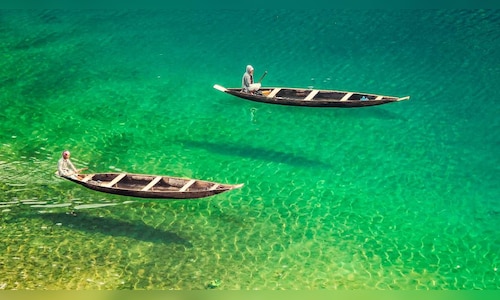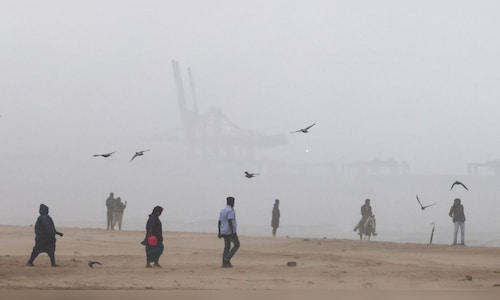India is home to a large number of rivers, which are divided into four categories: Himalayan rivers, Deccan rivers, coastal rivers, and rivers of the inland drainage basin.
These rivers are a major source of drinking water and irrigation. Not only are they breathtakingly beautiful, but they also support diverse aquatic life and ecosystems.
Take a look at the five cleanest rivers in India and where they are located:
Umngot river | Located in Meghalaya, the Umngot River is considered one of the cleanest rivers in India. Its crystal-clear waters make boats appear to be floating in the air. Also known as the Dawki river, it is 100 km from Shillong. “It seems as if the boat is in the air; the water is so clean and transparent. Wish all our rivers were as clean. Hats off to the people of Meghalaya,” according to the Ministry of Jal Shakti. Umngot runs in Mawlynnong village, near India’s border with Bangladesh, which has been touted as “Asia’s cleanest village.”
Teesta river | One of the cleanest rivers in India, the Teesta flows through the states of Sikkim and West Bengal before entering Bangladesh. It flows for approximately 151 km through Sikkim, nearly 142 km in West Bengal, and the remaining 121 km via Bangladesh. The river is critical to the agriculture and livelihoods of millions of people across both countries. The Teesta is celebrated for its vibrant turquoise-green waters and picturesque views of the Eastern Himalayas. The Zemu glacier, one of the largest glaciers in the eastern Himalayas, serves as its source.
Chambal river | The Chambal river is one of India’s cleanest perennial rivers. It begins at Janapav, south of Mhow, on the south slope of Madhya Pradesh’s Vindhya range. The river flows north-northeast through Madhya Pradesh, briefly through Rajasthan, and then forms the border between Rajasthan and Madhya Pradesh before turning southeast to join the Yamuna in Uttar Pradesh. It terminates at a confluence of five rivers, including the Chambal, Kwari, Yamuna, Sind, and Pahuj, in Pachnada near Bhareh, Uttar Pradesh, on the border of the districts of Bhind and Etawah.
ALSO READ | Five circuits that connect multiple states for week-long travel in India
Brahmaputra river | The Brahmaputra is one of the world’s largest rivers, ranked fifth in terms of average discharge. The river flows from the Kailash peaks of the Himalayas at an elevation of 5,300 metres. After passing through Tibet, it enters India via Arunachal Pradesh and continues through Assam and Bangladesh, finally flowing into the Bay of Bengal. The massive river, which stretches 3,848 km, is the world’s widest and home to India’s longest bridge.
Narmada river | Narmada river is known for its relatively clean waters and is considered one of India’s cleanest rivers. It is a major river in central India that flows westward through Madhya Pradesh, Gujarat, and Maharashtra. The Narmada basin spans 38,145 square miles (98,796 square km) and contains a part of Chhattisgarh state. The waterway is fed by 41 tributaries.
ALSO READ | Why Indian netizens are nuts about this pristine paradise in Europe
(Edited by : Shoma Bhattacharjee)






